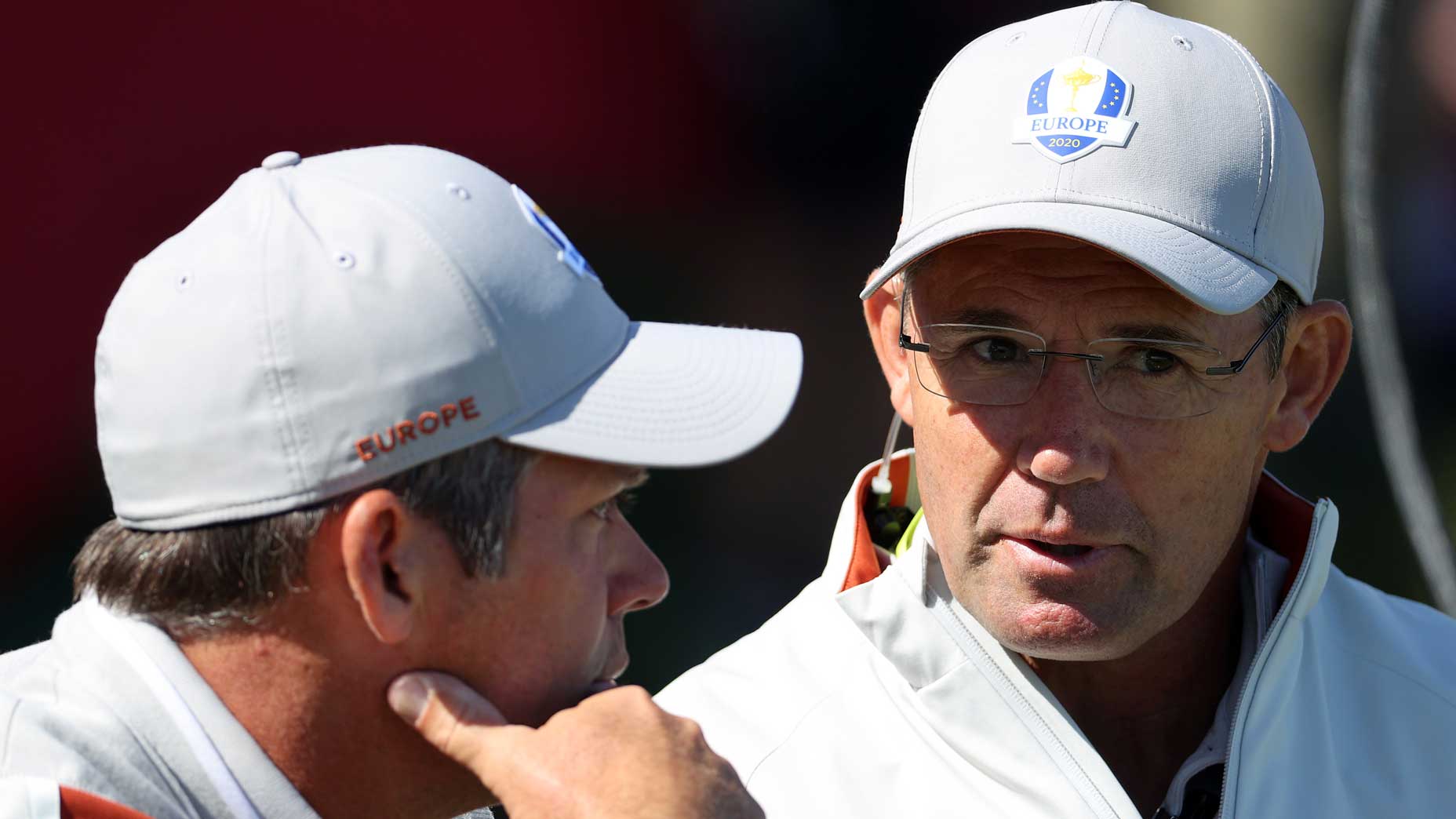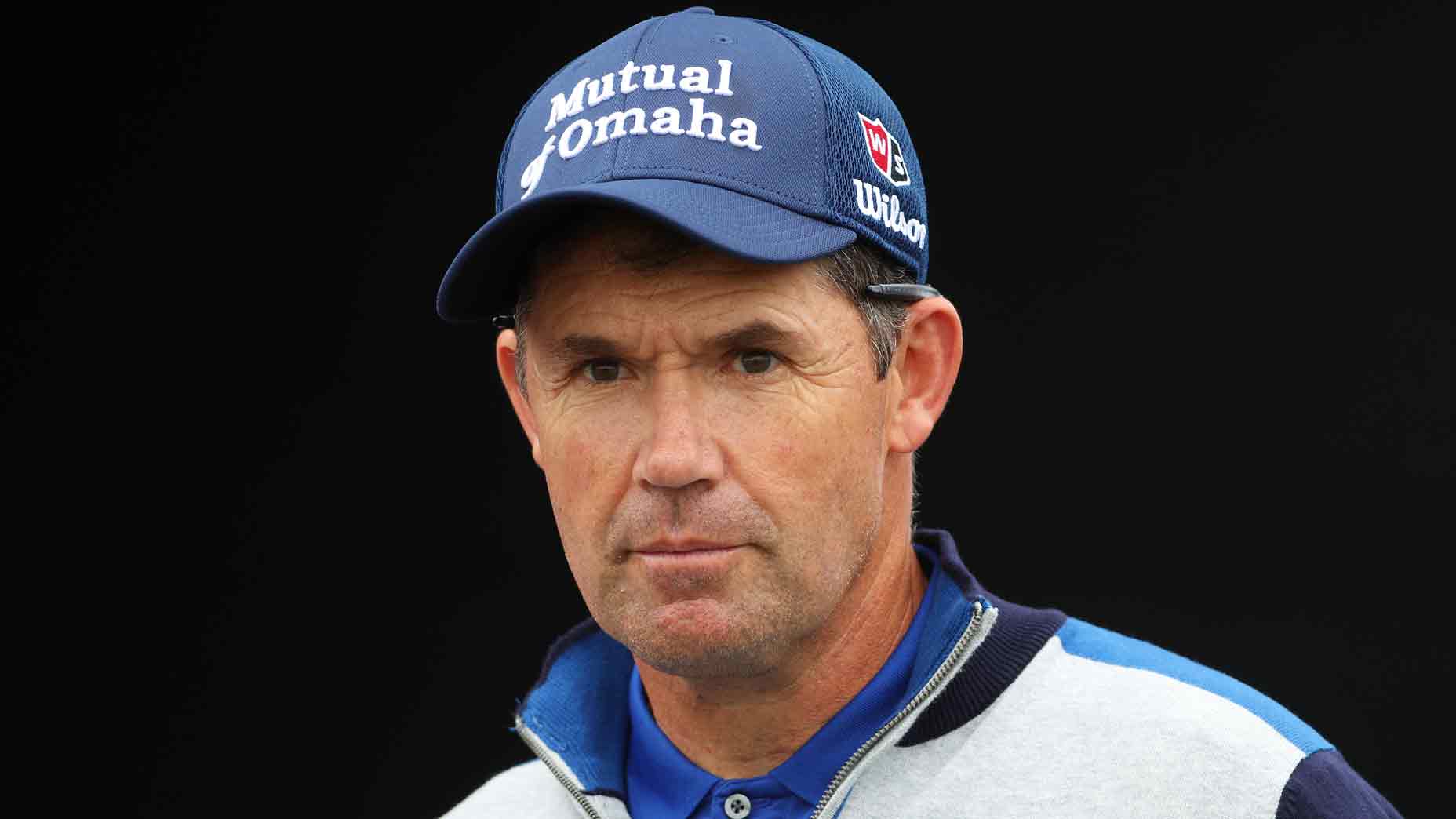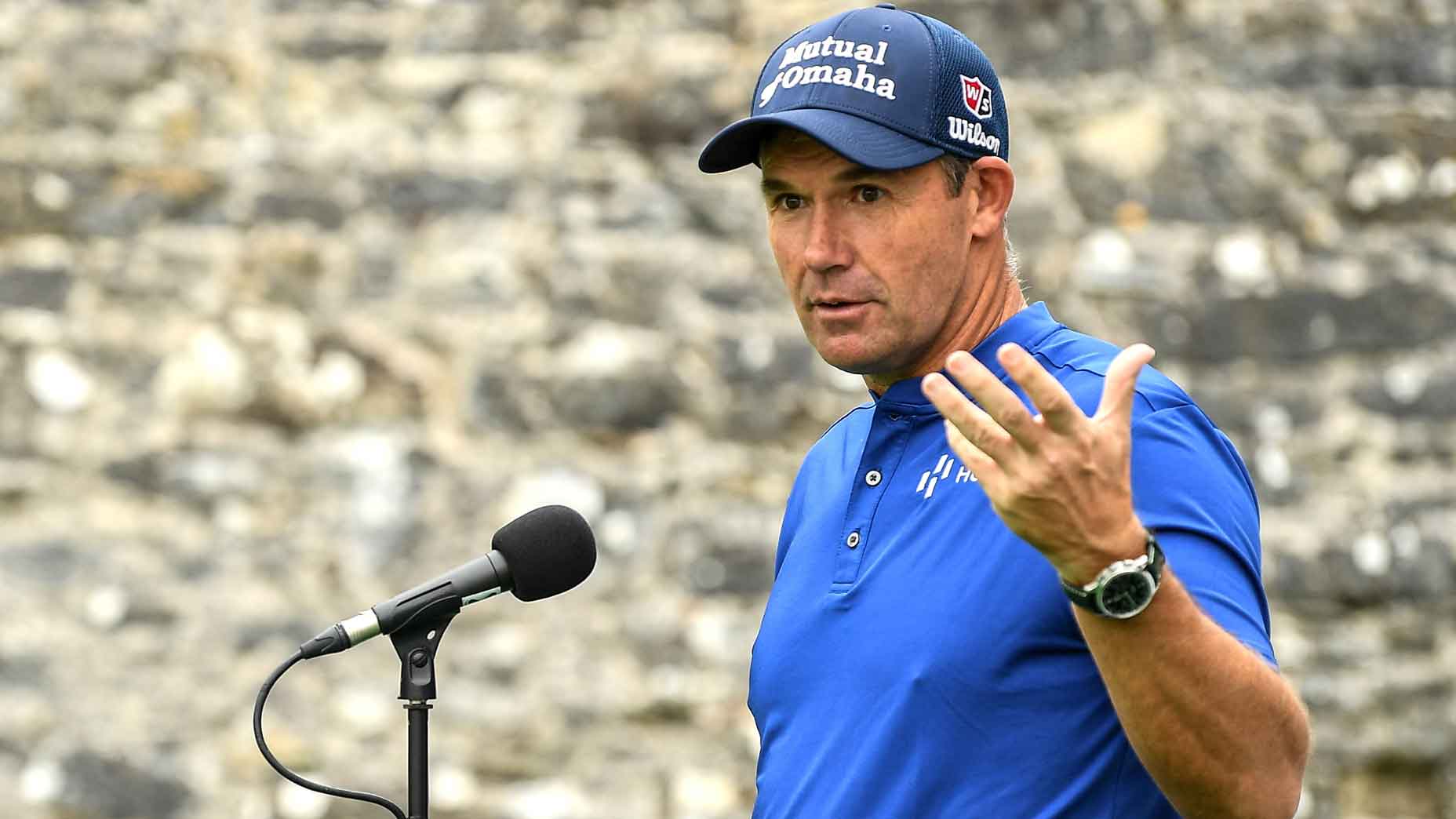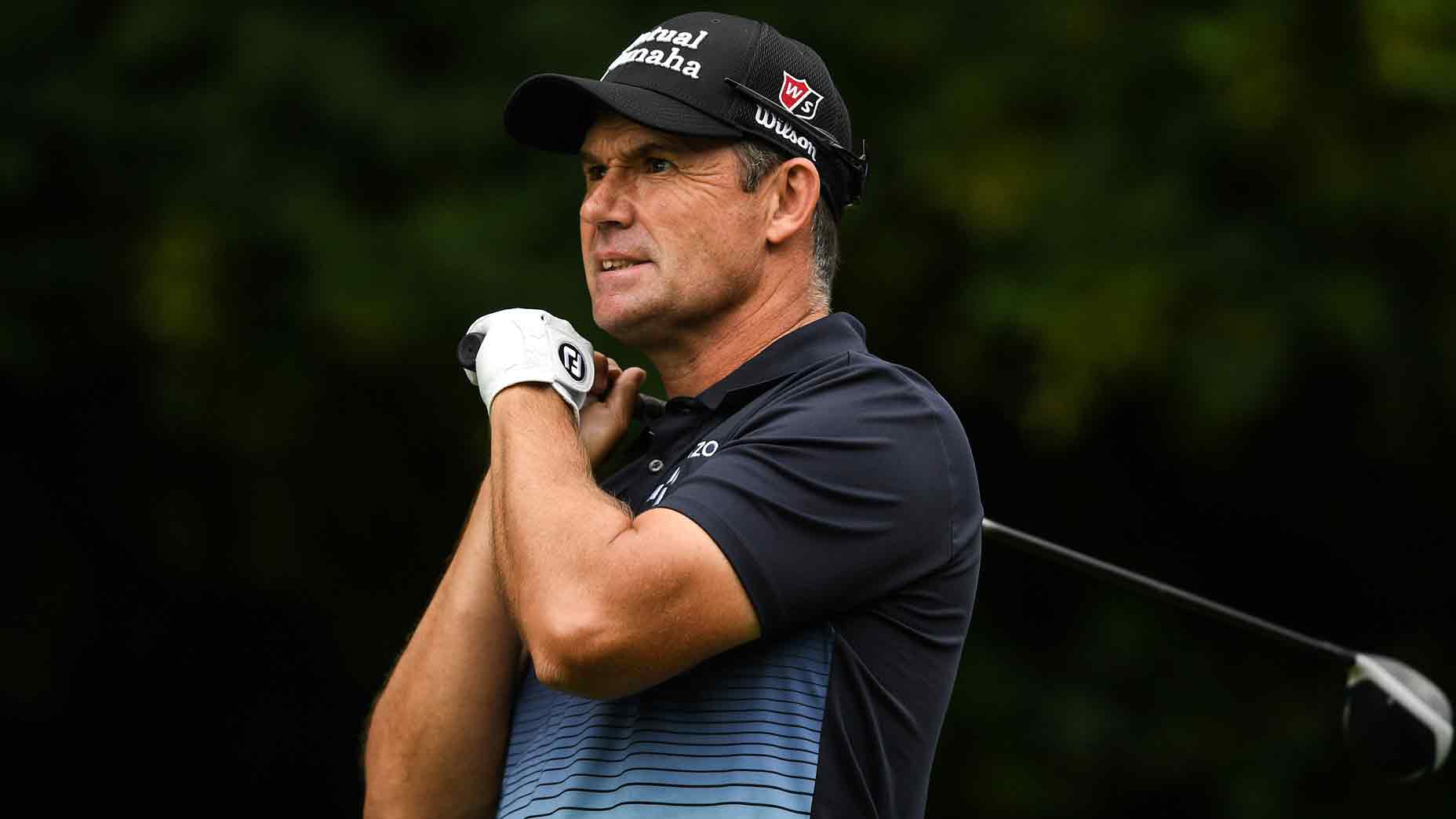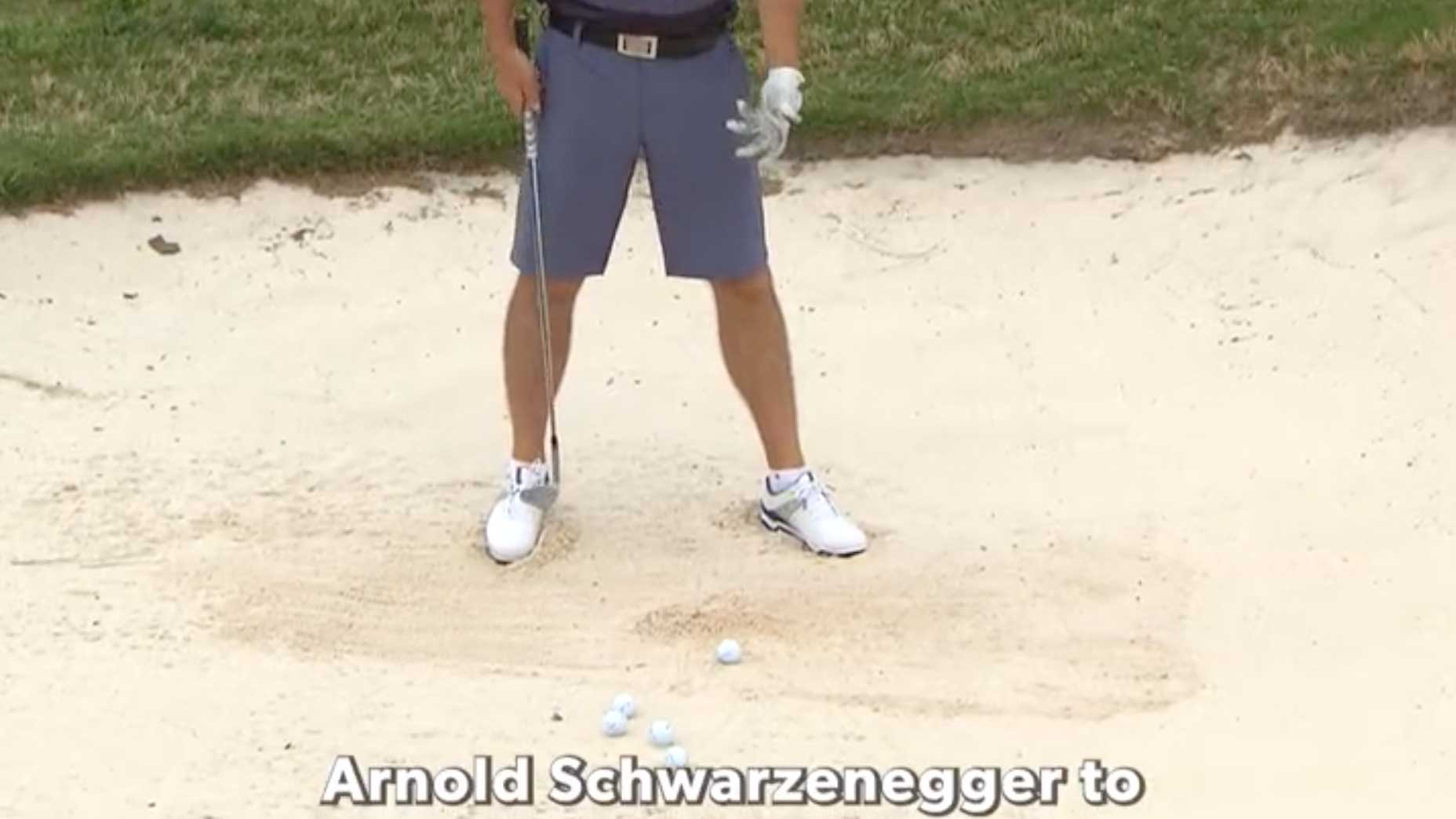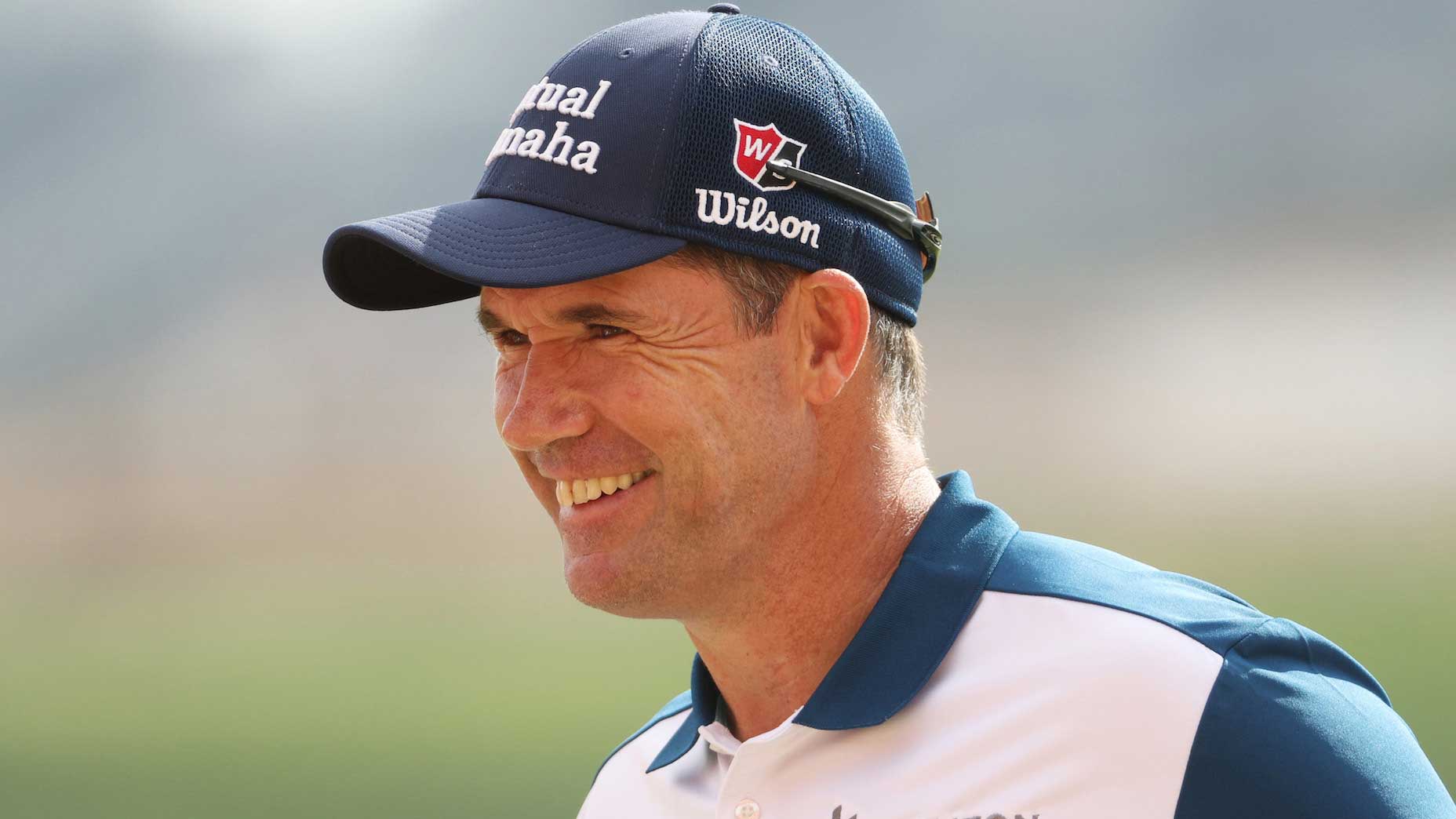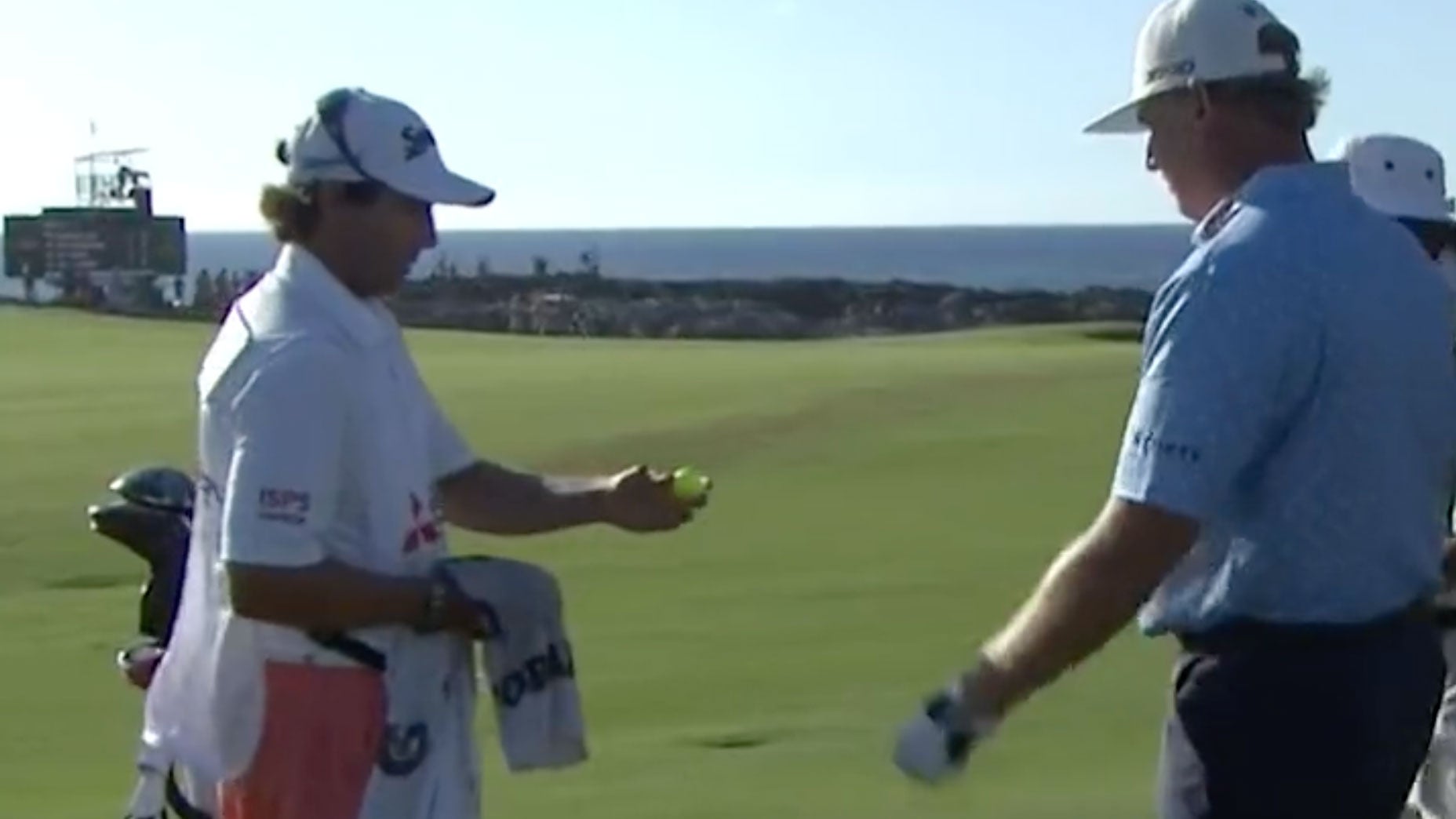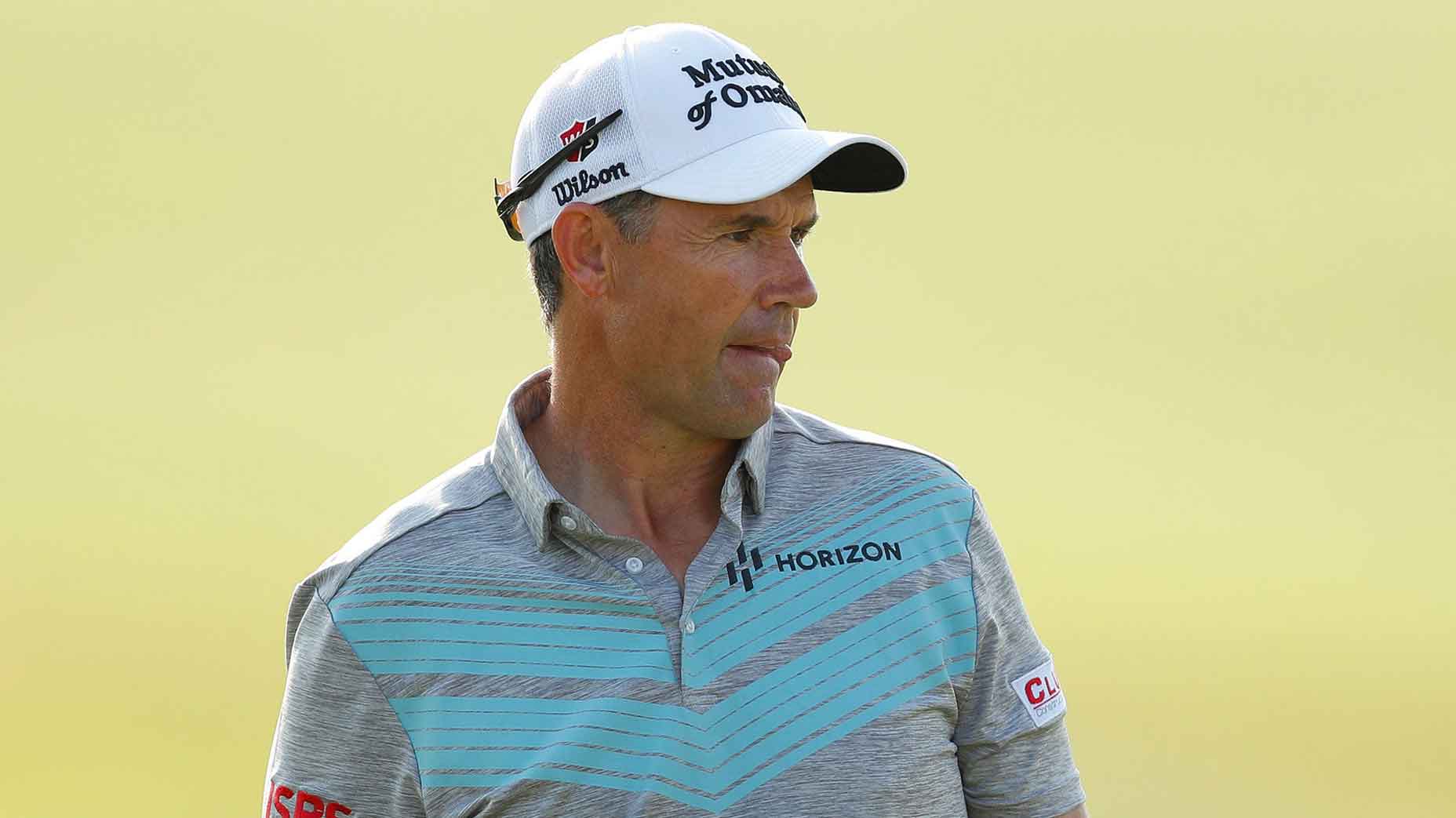This major winner’s biggest tip for hitting out of the rough? Look down.

Padraig Harrington hits a shot from the rough earlier this year during the BMW PGA Championship.
Getty Images
Keep your head down.
It’s likely going to be there anyway, when you’ve hit into the rough. And golf’s most-used tip — and maybe most-abused! — may help you get out.
In a video posted to his YouTube channel this week, Padraig Harrington says looking low uncovers the truth about your lie. Your ball is not just in the thick grass. It may be in grass that runs with your ball. It may be in grass that runs against it. It may be in grass that’s under a tree. And so on. And each, Harrington says, requires a different swing.
“All rough is not the same,” the three-time major winner said on the video. “It really depends on how the ball — not how deep it is into it, but what way the grass is lying and how much moisture is in the grass. There’s a number of factors that come into it.”
Let’s listen to Harrington on how to handle each.
If the ball sits straight down in the grass
“If the golf ball sits straight down in the grass and the grass is sitting straight up, we call that neutral,” Harrington said. “It’s going to come out slightly dead, so you’re going to have to hit it harder. It’s not going to have spin. It’s not going to come out very fast. … Again, it’s quite green when you look at it.”
If the ball sits in grass running toward the target
“If the grass is brushed down that way … that ball is going to come out fast and spin,” Harrington said. “With a short shot and a long shot, it’s going to come out fast with a flier and go a long way. So it’s going to go farther out of that lie than it would out of the fairway because the grass is helping accelerate the club because the grass is going the same direction I’m going.”
If the ball sits in grass running away from the target
“Now if I was to turn around and try and hit against that grass, it would come out exceptionally heavy because as I hit in, I’m going to hit grass, it’s all going to stand up and it’s going to grip around the hosel, it’s going to grip the face,” Harrington said. “So you can see the grass stands up, it’s going to come out particularly dead and go nowhere.
If the ball sits in grass running toward you
“So if the grass is going across you — the grass is going towards me, when I swing, that grass is going to stand up and I’m actually going to make the ball push — pushing it, but it certainly won’t hook,” Harrington said. “If the grass is going towards me, the ball is more likely to go right.”
If the ball sits in grass running away from you
“If I change the grass and push it away from me, when I swing into that grass, the grass is going to stand up this way. I’m really in danger of hitting a hook here,” Harrington said. “This is the one that whips around your hosel and you hit it across your left toe and left. The grass is flowing that way, it’s going to stand up and pull the ball left. That’s the danger one. That’s where you have to take extra loft, don’t go for much. If the grass is going away from you, if it’s dark green, if your ball is sitting in it, and you’re off the fairway, take more loft — hit a 9-iron or 8-iron; don’t go for broke with the heavy green lie that’s standing straight up.”
If the ball sits in grass on green grass — or less-than-green grass
“The greener the grass, obviously the more moisture in it, the heavier the ball is coming out, the harder you got to hit it,” Harrington said.
“The paler the grass … you’re going to get fliers; it’s just going to come flying. So that would be like links grass — the ball is going to come out really quick and go a long way. So if the grass is brown, usually the ball comes out quick. If the grass is dark green, it comes out slow.”
If the ball sits in grass under a tree
“If the grass is under the tree — so if you’ve hit it under the tree, you’ll see all golfers, they’ll take a practice swing, and what we note when we take the practice swing a lot of times is how thick, how much resistance is in the grass,” Harrington said. “If you’re under the tree line, generally there’s no roots; the grass can be quite long, but under the trees, the grass won’t grow heavy with thick roots so the ball will come out quick and you don’t have to worry if you’re under the tree line.
“If you’re close to the fairway and sprinklers, usually the grass is quite thick and lush, it will be dark green and the roots are strong, and that’s the one that you have to hit really hard.”
A word on technique
“So when you’re playing a pitch shot-chip shot, there’s this thought that on a chip shot, you should hit two inches behind the ball in the rough, a bit like a bunker shot. Rubbish,” Harrington said. “If you try and hit two inches behind the ball, you’re going to end up hitting six inches behind the ball.
“You always try and hit the ball as clean and tight to the golf ball as you can in the rough whether it’s a long shot or a chip shot.”



